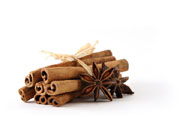
A Short History of Honey
Honey was revered in the ancient world for its taste and medicinal qualities. It was known all the way back to the time of the Egyptians and before. Its value was so well accepted that it was even used in some instances as a form of payment or currency.
I’m sure you have all heard the expression “the land of milk and honey,” and this attests to the value that was placed upon it, being mentioned alongside a staple food like milk. Honey in those days was not processed, and retained all of the benefits of raw honey.
The benefits of honey were well known to all of the ancient shamans, medicine men, and all those who practiced folk and herbal based healing. In more modern times honey has been embraced by all those living and promoting holistic and natural medical practices.
Unique Qualities of Honey
Honey is made by a special type of bees called “honeybees.” They collect nectar from flowers, digest it and then essentially regurgitate it back out in the form of honey. It is similar in composition and sweetness to sugar, but is handled differently by the body.
Polyfloral honey is made from many different types of flowers. Monofloral is made from one particular type such as, orange blossom, tupelo honey, manuka, and “clover buckwheat, sourwood, sage, and eucalyptus, with manuka having the greatest benefits of honey.
There are many different types of honey processing and really too numerous to mention on this page. I want to focus on two types of honey, raw honey, and certified organic honey. These are NOT interchangeable, because raw honey is not necessarily organic!
Never give honey to infants under the age of 18 months.Some honey contains low count of naturally occurring bacterial botulinum spores,hence, there is a potential for these organism to produce toxin, possibly causing a serious form of food poisoning known as infant botulism.
For purposes of clarification, raw honey is that which is harvested and bottled without being pasteurized or otherwise heated. This is important because heat alters the nutritional properties of honey and also diminishes the benefits of honey.
Even when the honey has not been heated, there may be things the beekeepers use such as sulfa drugs and antibiotics to prevent bee disease, calcium cyanide to kill the bees before harvesting the honey, and carbolic acid to remove the honey from the hive.
Also, the bees may have collected nectar from flowers that were sprayed with pesticides, which is why honey which is certified organic has to be harvested from hives where the area is certified pesticide free, as well as ensuring beekeepers do not use the above chemicals and methods in the harvesting of raw honey.
As always, when food is processed especially by any method using heat, valuable nutrients are lost and the value of that food is diminished. Honey is of course, no exception. Raw certified organic honey is your best bet if you can find it!
Honey and Cinnamon
Honey, historically in the form of raw honey (and by circumstance also organic) has been used both as a food and a medicine. It has natural antibacterial and antiseptic properties and even forms hydrogen peroxide when in contact with the body, killing bacteria.
Some of the historical medicinal uses of raw honey are:
- Wound dressings for healing infections and burns
- Used as an acne remedy
- Treatment for coughs and sore throats
- Can be used as a sweetener for diabetics
- Treatment of stomach ulcers
- Taken for its antioxidant properties
- Used as a oral antibacterial
- Tonic for the immune system
- Used to promote sound sleep
The above list does not come close to covering all the potential benefits of honey, and we are still discovering, or perhaps “rediscovering” new ones. There are special benefits attributed to the combination of honey and cinnamon.
Cinnamon like honey has antibacterial and healing properties according to Ayurvedic traditions. As we often see with other substances, they seem to have a synergistic effect, meaning they work better together than either works separately.
Honey and cinnamon compliment each other taste wise and are easy to mix together and apply to the skin for wounds and burns. Interestingly, both are beneficial to diabetics as they can help control blood sugar. This combination has also been used for:
- Weight loss
- Control of cholesterol
- Arthritis
- Hair loss
- Toothache
- Bladder infections
Another thing that can be said about the combination of honey and cinnamon is that they taste very good together.
If they are being used orally, it helps that the “medicine” in this case is something the person will enjoy taking. That often can make a big difference!
Honey has an amazing history and track record as a safe and natural remedy for a host of ailments. Take time to explore the benefits of honey, and add this sweetest of natural medicines to your antiaging health arsenal!
Bad Nutrition – Five Major Nutritional Mistakes
Benefits of L-Arginine for Antiaging





